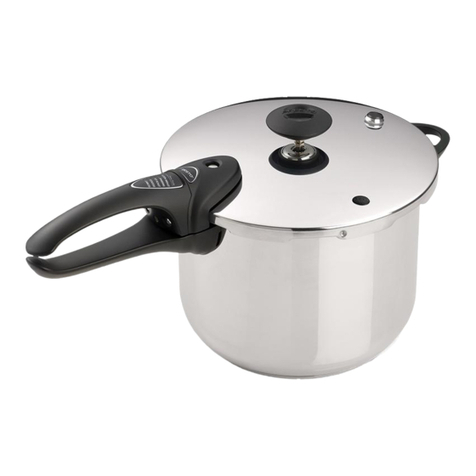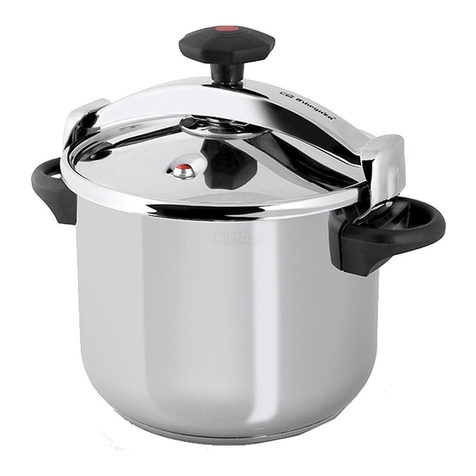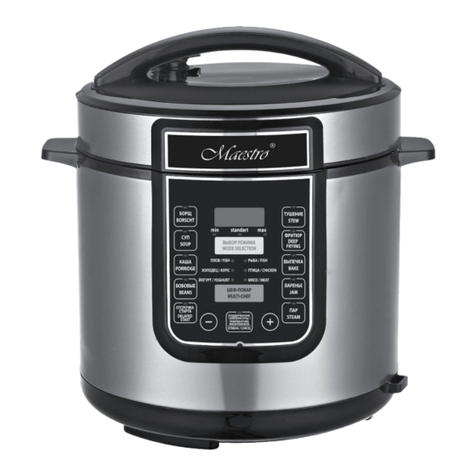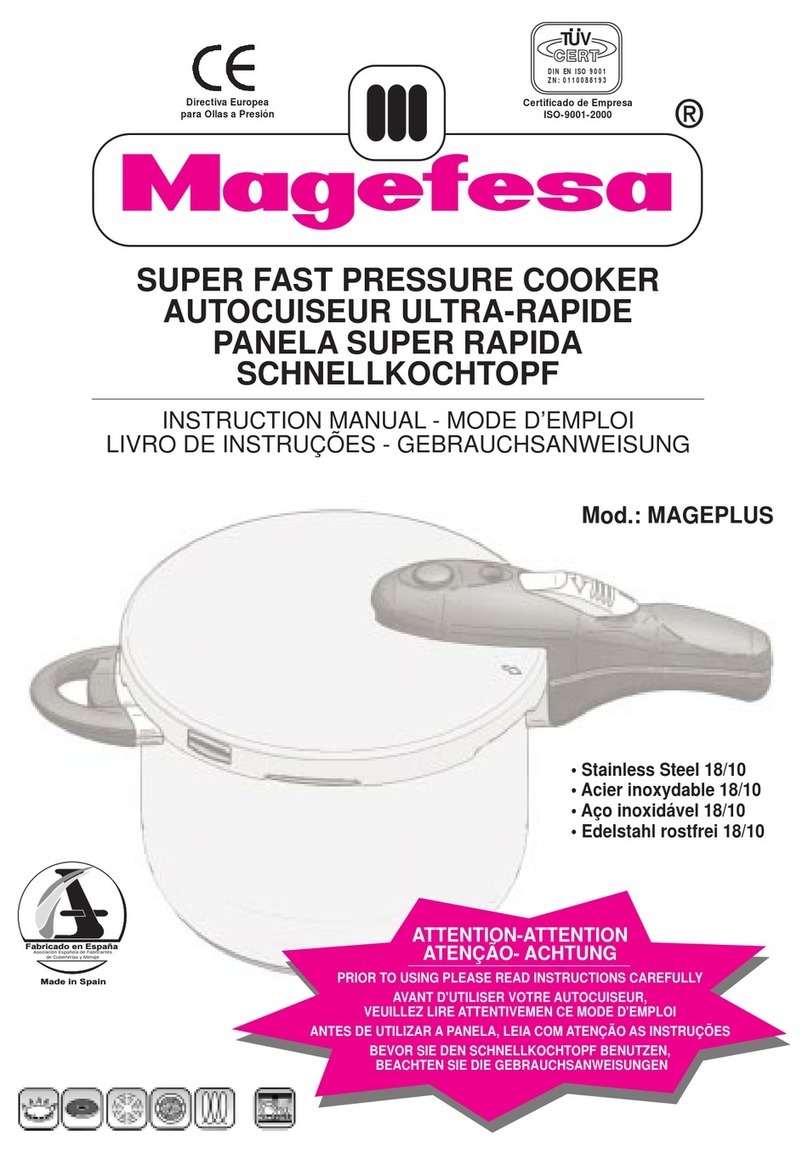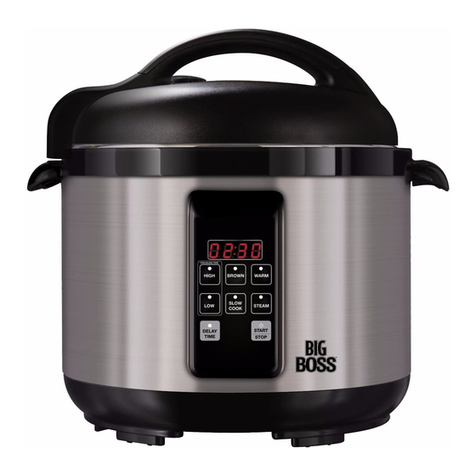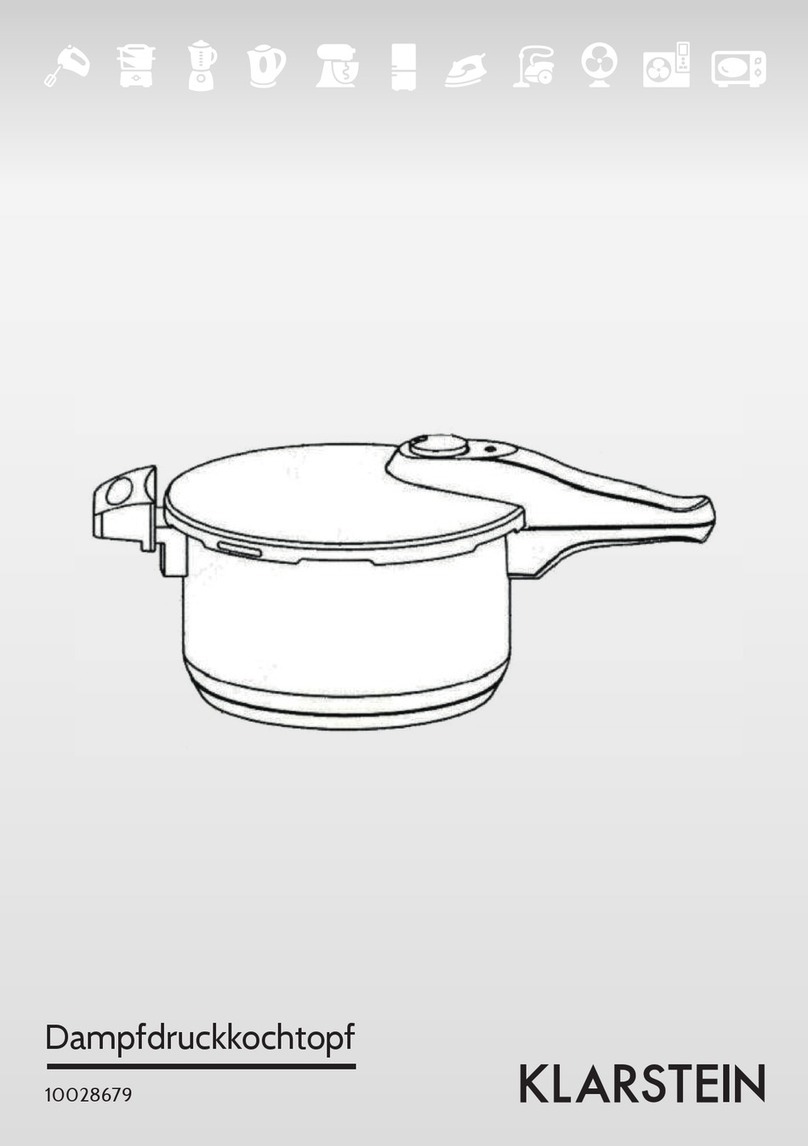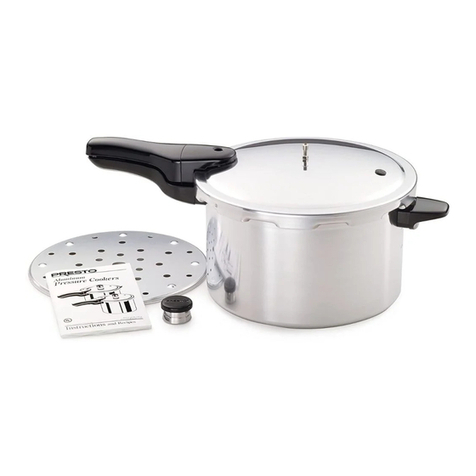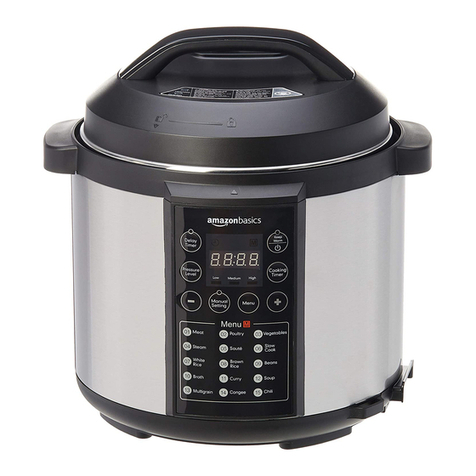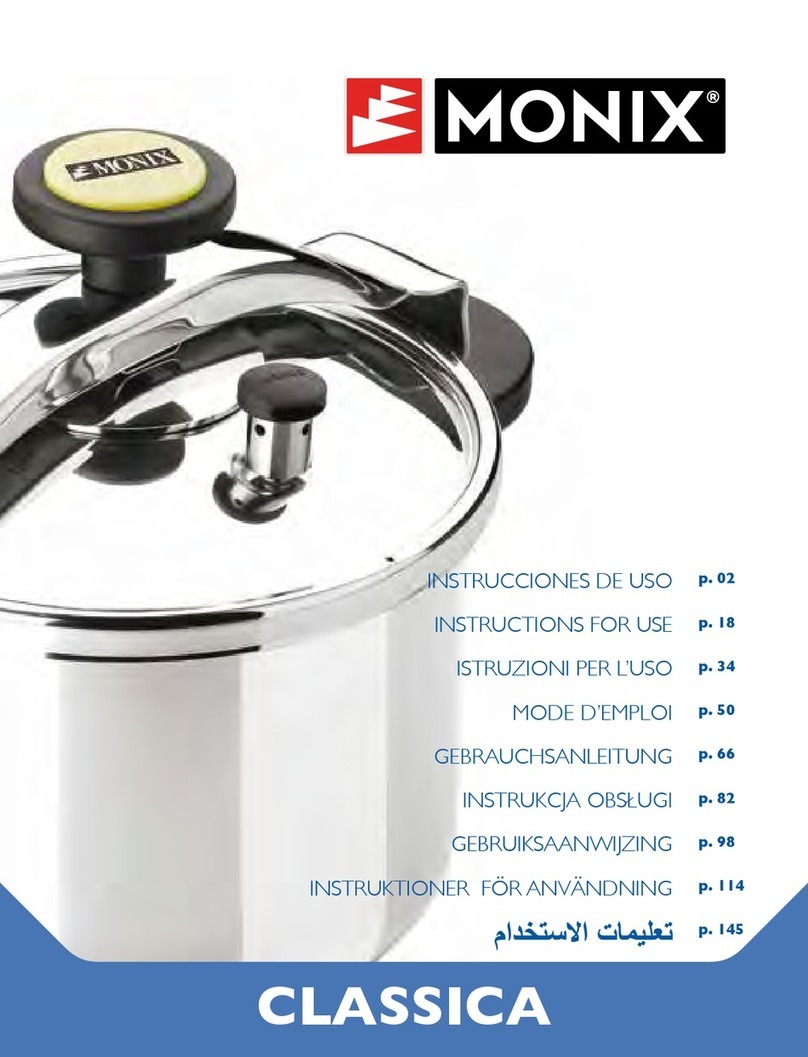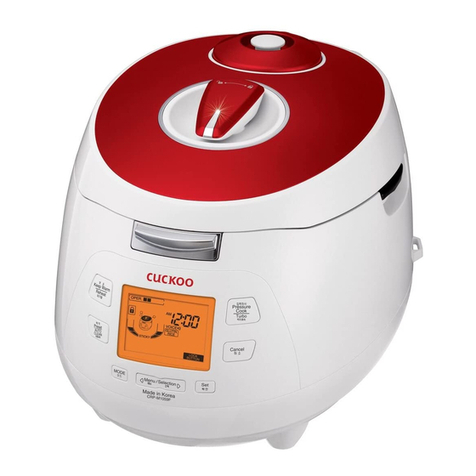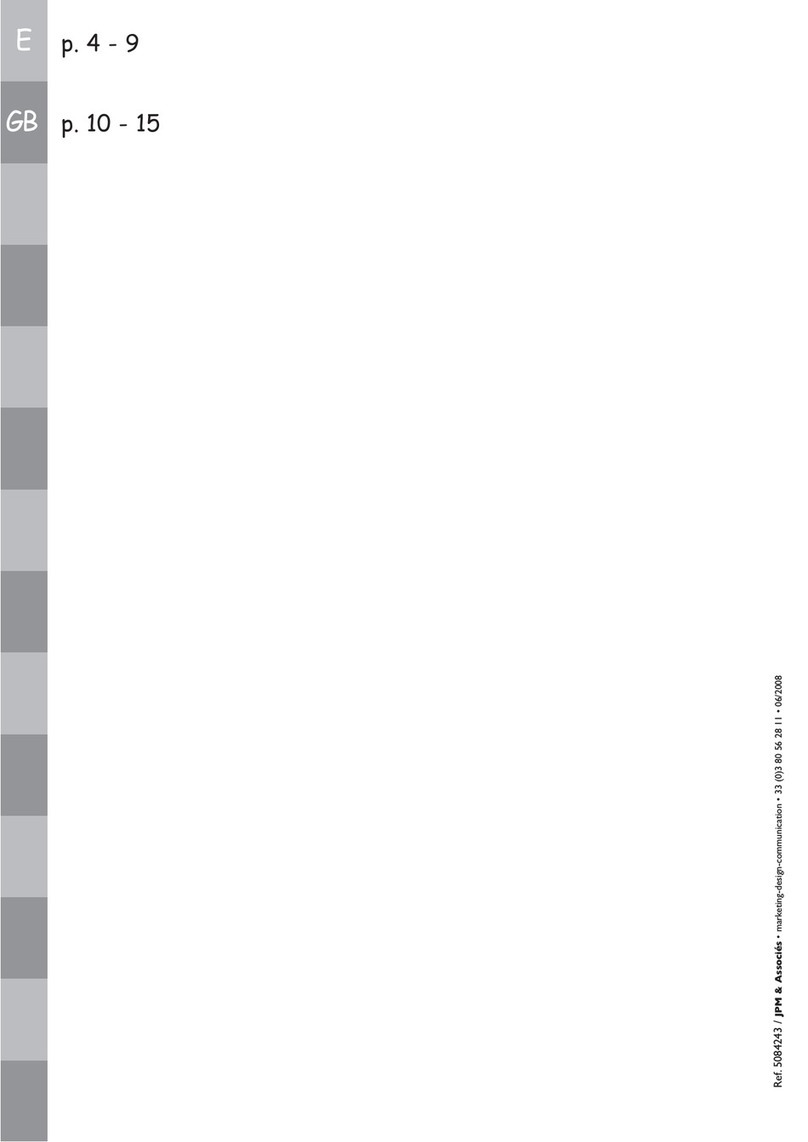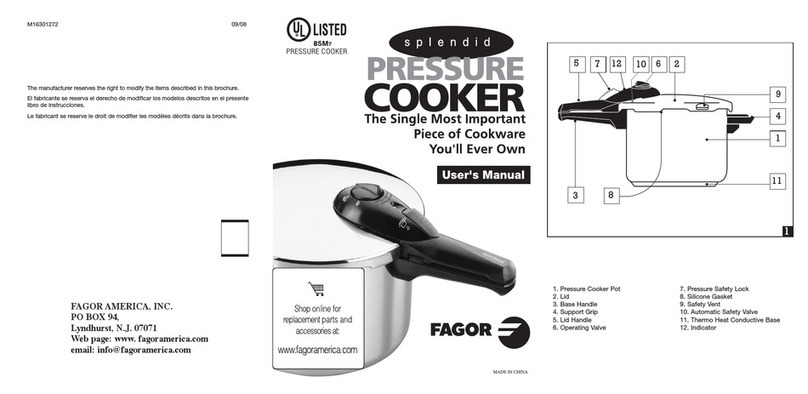Tescoma Prominent User manual

Návod k obsluze a vaření v tlakovém hrnci
Instructions for use and cooking in the pressure cooker
Gebrauchsanleitung und Kochen im Schnellkochtopf
Mode d’emploi et cuisson dans la marmite à pression
Istruzioni per l‘uso e cucinare nella pentola a pressione
Instrucciones de uso y cocinar en la olla a presión
Instruções de utilização e cozedura na panela de pressão
Instrukcja obsługi i gotowanie w szybkowarze
Návod na použitie a varenie v tlakovom hrnci
Инструкция по эксплуатации и приготовление в скороварке
Prominent

We congratulate you on the purchase of this Tescoma product. Thank you
for buying Tescoma. If needed, please contact your retailer or Tescoma at
www.tescoma.com.
CHARACTERISTICS
Pressure cooker PROMINENT enables cooking at low or high pressure*, which
contributes to preserving the natural taste and nutritional value of meals. Cooking with
the PROMINENT pressure cooker is significantly faster than standard cooking.
The PROMINENT pressure cooker is made of high-grade stainless steel and is space
saving both in cooking and storing thanks to its modern compact manufacture.
The solid three-layer sandwich bottom has excellent heat retaining properties that
help to economise on energy. Cooking is faster and at a low heat output; the heat
may be switched off in advance before the end of cooking.
The solid grips of the pressure cooker are made of high-quality resistant plastic and they
do not burn if used properly.
The pressure cooker is provided with 4 independent safety cut-outs and is entirely safe to use.
The PROMINENT pressure cooker is suitable for all types of cooker: gas, electric,
vitroceramic and induction cookers.
* OPERATING PRESSURES IN THE PROMINENT PRESSURE COOKER
The operating pressure in the vessel is 0.55 bar when cooking in position 1.
The operating pressure in the vessel is 0.90 bar when cooking in position 2.
PRESSURE COOKER DESCRIPTION
1. Operating valve with pressure regulator
2. Safety valve
3. Pressure indicator with a lock against accidental opening
4. Lid
5. Lid grips
6. Lid open / close button
7. Pressure cut-out - aperture in the rim of the lid
8. Silicone seal
9. Vessel
10. Vessel grips
11 Sandwich bottom
Pressure cooker PROMINENT

BEFORE FIRST USE
Thoroughly study the instructions for use before first use. Thoroughly wash the pressure
cooker and all its parts with warm water and detergent and wipe dry.
BEFORE EACH USE
Inspecting the valves (Fig. A, B, C, D)
Operating valve (1)
Remove the lid from the vessel, turn the pressure regulator to the end left position ( )
and pull upwards to remove it from the lid. Make sure that the aperture in the piston of
the operating valve on the lid is clean and not clogged (Fig. A). If soiled, flush it under
running water or clean it using a suitable object such as a thin skewer (Fig. B). Attach the
operating pressure regulator back into position after inspecting it.
Safety valve (2)
Push on the centre of the safety valve - the ball (Fig. C) using a suitable object such
as a thin skewer. The ball must spring and the safety valve must move freely in the lid
aperture.
INSPECT THE VALVES BEFORE EACH USE OF THE PRESSURE COOKER, APPLYING DUE CARE.
INSTRUCTIONS FOR USE
Opening the pressure cooker (Fig. D)
Move the lid open / close button (6) to the centre of the lid, hold it and turn the lid
counter clockwise (the “OPEN” symbol). Remove the lid from the vessel.
DO NOT APPLY INAPPROPRIATE FORCE WHEN OPENING THE PRESSURE COOKER.
Filling the pressure cooker (Fig. E)
FOR SAFETY REASONS, THE PRESSURE COOKER MUST BE FILLED TO A MAXIMUM OF
2/3 VESSEL CAPACITY.
With foods that tend to froth or swell when heated, such as soups or lentils, rice, etc., fill
the pressure cooker to a maximum of 1/2 vessel capacity to avoid unwanted clogging
of valves and overboiling.
DO NOT COOK WITHOUT WATER IN THE PRESSURE COOKER. THE MINIMUM AMOUNT
OF WATER IS 250 ML.
Closing the pressure cooker (Fig. F)
Place the lid (4) onto the vessel so that the arrow on the lid and the arrow on the vessel
grip point towards each other. Turn the lid clockwise (the “CLOSE” symbol) so that
the vessel grips and the lid grips are aligned. A clicking sound will be heard and the
lid open / close button (6) will automatically move to the initial position. If this does not
happen, move the button to the initial position manually.
DO NOT APPLY INAPPROPRIATE FORCE WHEN CLOSING THE PRESSURE COOKER.

Cooking in the pressure cooker (Fig. G, H, J, K)
SELECT LOW OR HIGH PRESSURE BY SLIGHTLY TURNING THE OPERATING VALVE
REGULATOR.
1. If you wish to cook at a low pressure, turn the operating valve to position “1”.
Cooking at a low pressure is ideal for economic cooking of meals, for example for
cooking vegetables, fruits, lentils, fish, etc. (Fig. G).
2. If you wish to cook at a high pressure, turn the operating valve to position “2”.
Cooking at a high pressure is quicker and uses a higher temperature. It is suitable
in particular for cooking meat and meals that require longer thermal treatment (Fig. H).
3. Place the correctly filled and closed pressure cooker set to low or high pressure
onto a cooker set to the highest output.
4. After a short while steam will begin to escape with moderate hissing from
the safety valve aperture below the lid grip (Fig. J); the hissing will cease after
a moment and the pressure indicator (3) will slip upwards. This means that
the pressure in the vessel has reached the required operating level; at this moment
steambegins to escape from the operating valve (Fig. K).
5. Now reduce heat so that only a small amount of steam escapes from
the operating valve. A low heat will usually be enough.
6. We do not recommend changing the low / high pressure setting while cooking.
If this is necessary, use a oven mitten when handling the pressure regulator.
WARNING! A MINUTE AMOUNT OF STEAM MAY ALSO ESCAPE FROM THE SAFETY LID
APERTURE BELOW THE LID GRIP DURING THE COOKING PROCESS.
NOTICE
If a large amount of steam escapes from the pressure cooker at the beginning of
the cooking process, the pressure cooker has not been correctly closed. Incorrect closing
is usually due to the following:
a) The lid is attached incorrectly - close the pressure cooker again.
b) The operating valve is set to the steam release position - set it to the low or high
pressure-cooking position.
c) The silicone seal is incorrectly positioned in the lid - check its position.
d) The silicone seal is faulty - replace it with a new original Tescoma seal.
Cooking termination (Fig. L)
ALWAYS RELEASE STEAM ONLY AFTER REMOVING THE PRESSURE COOKER FROM
HEAT!
After the time required for cooking your meal elapses, remove the pressure cooker
from the heat source even if the latter has already been switched off.
Set the pressure cooker aside for a while to allow the temperature and pressure in the
pressure cooker to drop spontaneously.
Turn the operating valve to the steam release position ( ) and release steam from
the pressure cooker (Fig. L).

The pressure indicator will slip in automatically after the pressure in the vessel drops
entirely and the pressure cooker can be opened.
If the pressure indicator is in the upper position and the pressure cooker cannot be opened,
pressure still remains in the vessel. Make sure that the operating valve is set to the steam
release position. If the pressure cooker still cannot be opened, cool the lid with a small
amount of slowly running cold water until the safety valve slips in automatically.
NEVER COOL THE PRESSURE COOKER ABRUPTLY, DO NOT LET WATER RUN ONTO
PLASTIC PARTS AND DO NOT IMMERSE THE ENTIRE PRESSURE COOKER IN WATER.
SAFETY CUT-OUTS
Operating valve (1)
The operating valve controls the high and low pressure, continuously releases excess
steam and releases all steam from the pressure cooker at the end of cooking.
Safety valve (2)
The safety valve operates as a backup activated when the operating valve becomes
clogged. Immediately remove the pressure cooker from the heat source if steam
ceases to escape from the operating valve and starts to escape intensely from the safety
valve during the cooking process. After the pressure cooker cools down, open it and
clean the operating valve.
Warning! A minute amount of steam may escape also from the safety valve
during the cooking process!
Pressure indicator with a lock against accidental opening (3)
Indicates that the operating pressure in the vessel has been reached and simultaneously
prevents accidental opening of the lid until all steam and pressure escape from
the pressure cooker.
Pressure cut-out - aperture in the rim of the lid (7)
If the operating valve and the safety valve become clogged at once, the pressure in the
pressure cooker pushes the silicone seal (8) through the aperture in the rim of the lid,
which causes an immediate drop in pressure and steam release.
IF THE SILICONE SEAL IS PUSHED THROUGH THE APERTURE IN THE RIM OF THE
LID, DO NOT REPAIR THE PRESSURE COOKER YOURSELF; INSTEAD BRING IT IN FOR
PROFESSIONAL SERVICING.
PRACTICAL RECOMMENDATIONS
ALWAYS USE AN APPROPRIATE SIZE OF COOKING RANGE OR FLAME FOR COOKING.
The diameter of the cooking range must be identical or smaller than the diameter
of the bottom of the pressure cooker! Flame must never expand beyond the bottom
of the pressure cooker. Use the dispenser net or cooking range when cooking on gas.
Switch the heat off in advance before the end of cooking; make use of the heat
Table of contents
Languages:
Other Tescoma Electric Pressure Cooker manuals
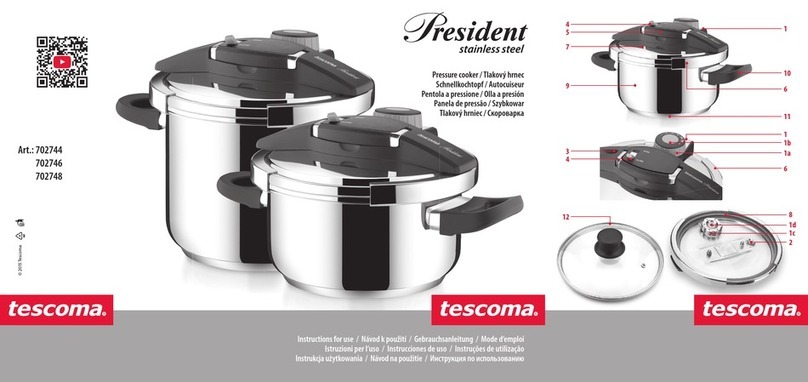
Tescoma
Tescoma President User manual
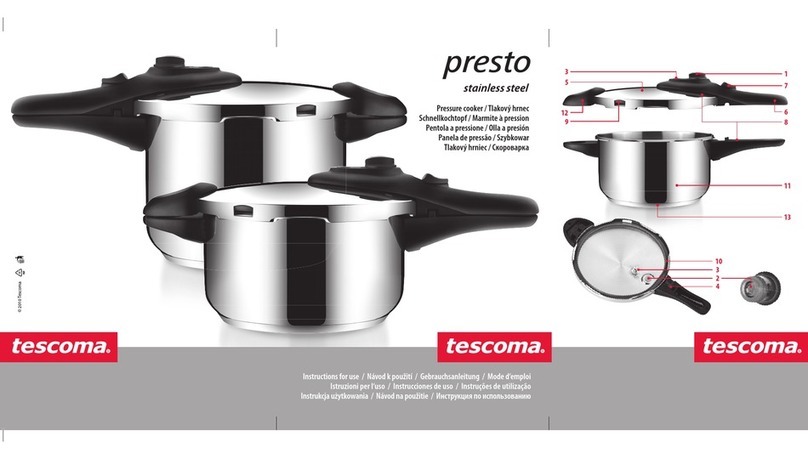
Tescoma
Tescoma presto User manual
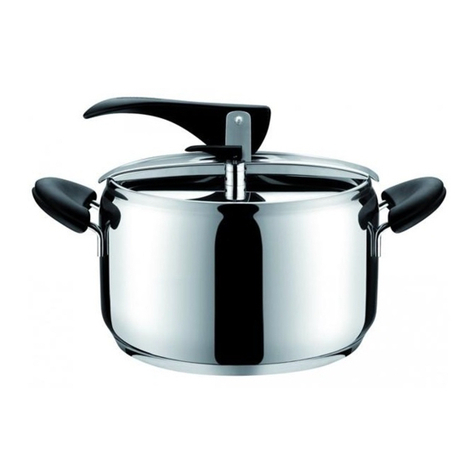
Tescoma
Tescoma MAGNUM User manual

Tescoma
Tescoma Ultima Series User manual
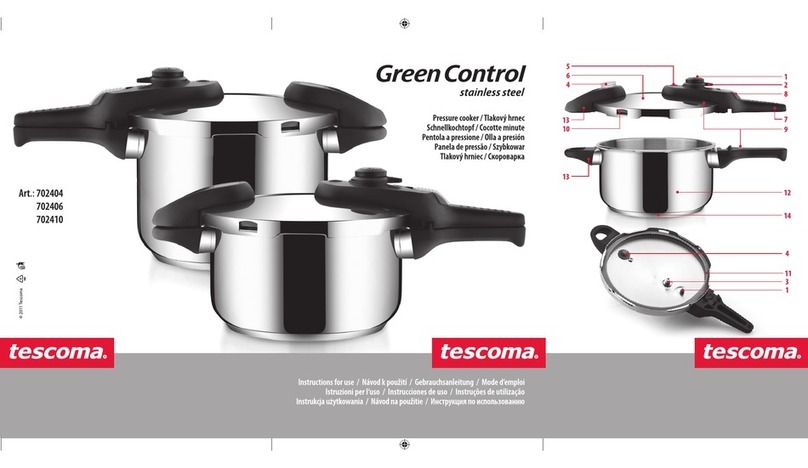
Tescoma
Tescoma 702404 User manual
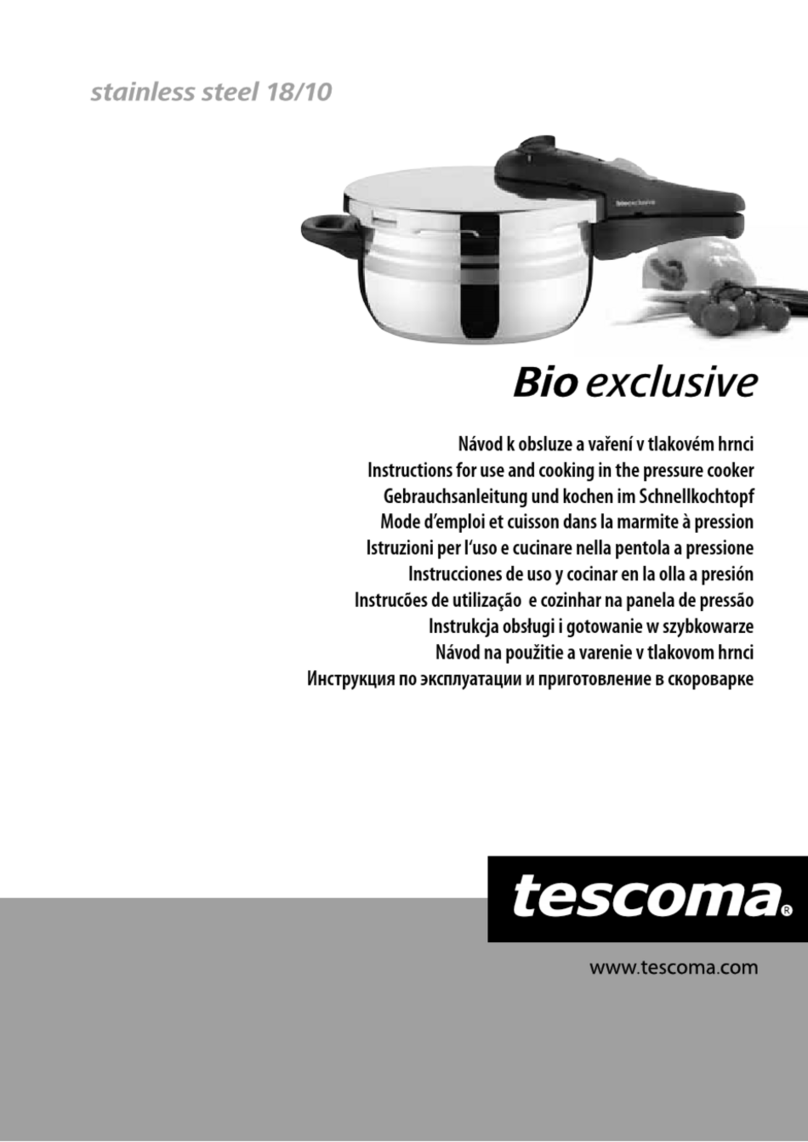
Tescoma
Tescoma Bio exclusive User manual
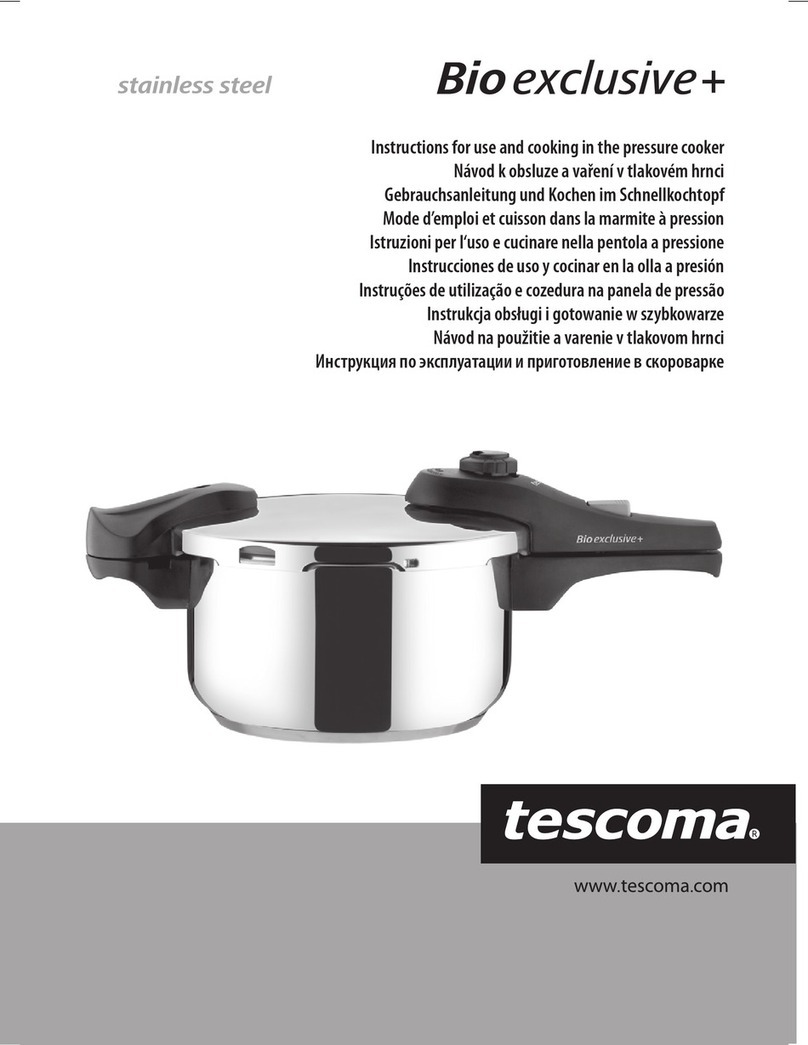
Tescoma
Tescoma Bio exclusice+ User manual
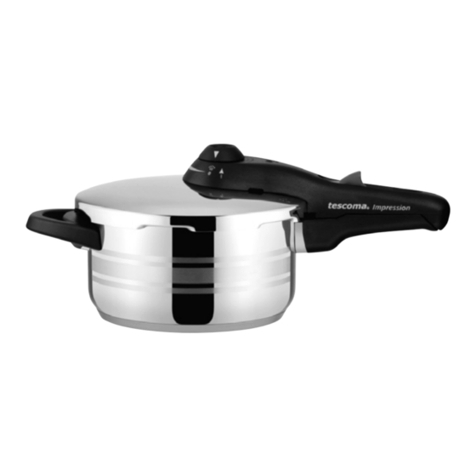
Tescoma
Tescoma IMPRESSION User manual
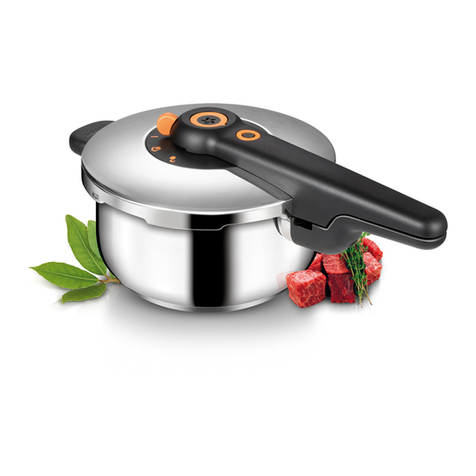
Tescoma
Tescoma SmartClick 702104 User manual
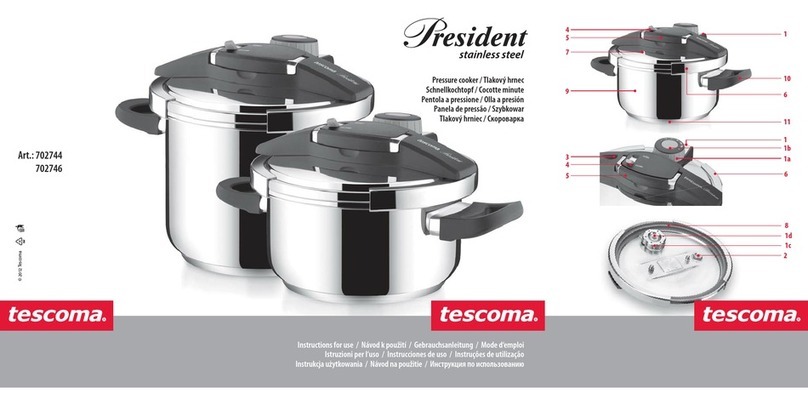
Tescoma
Tescoma President 702744 User manual
